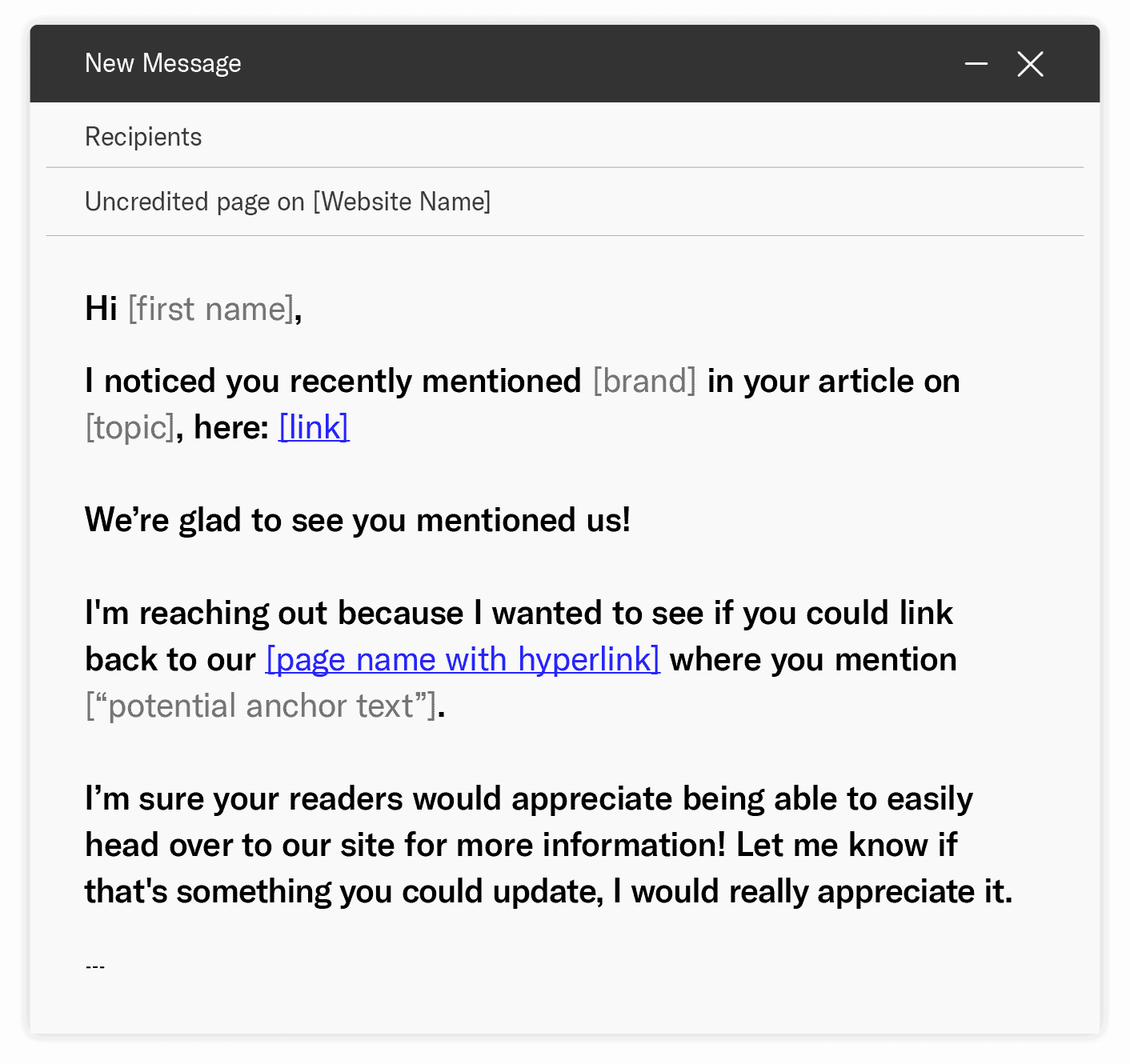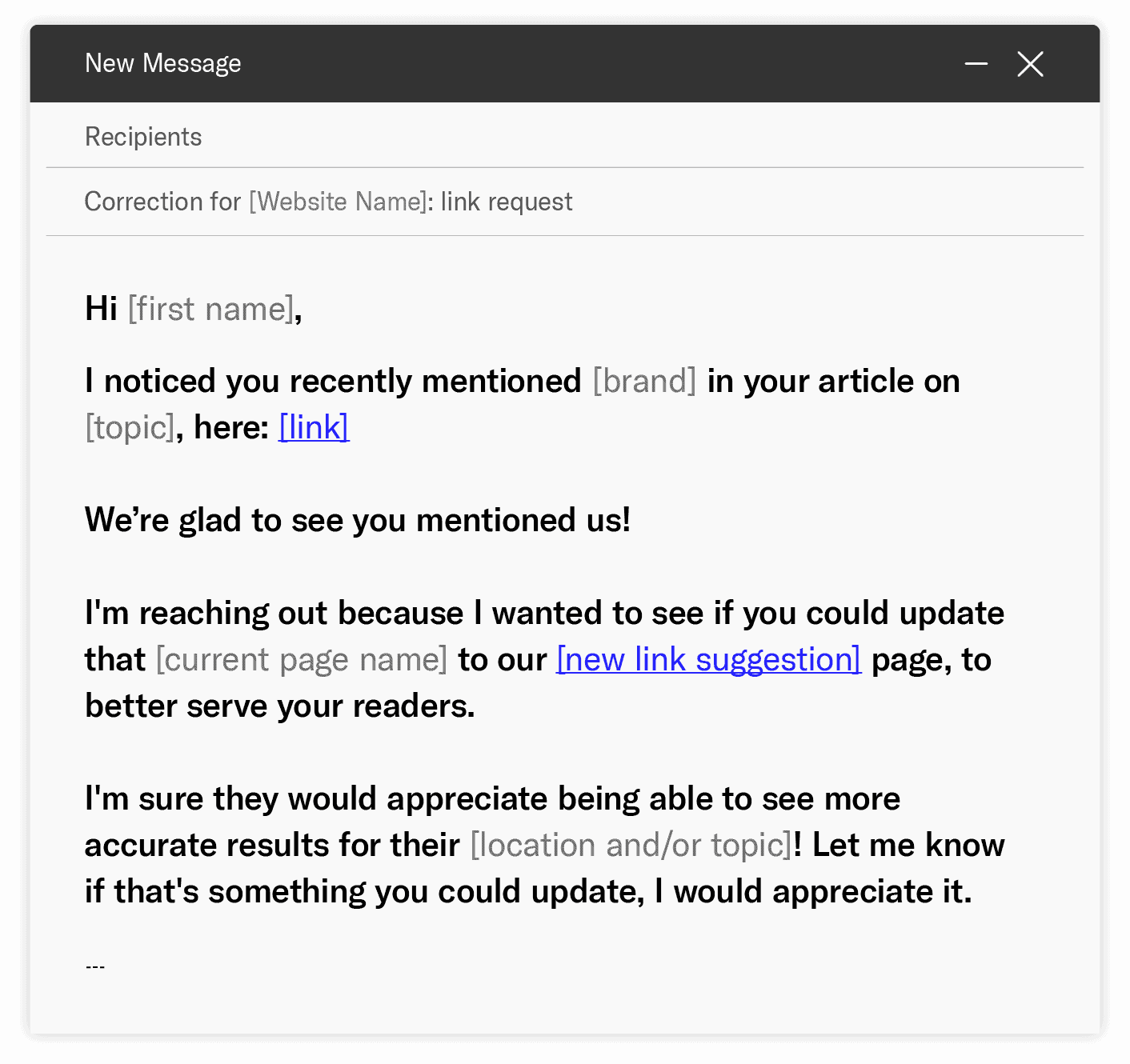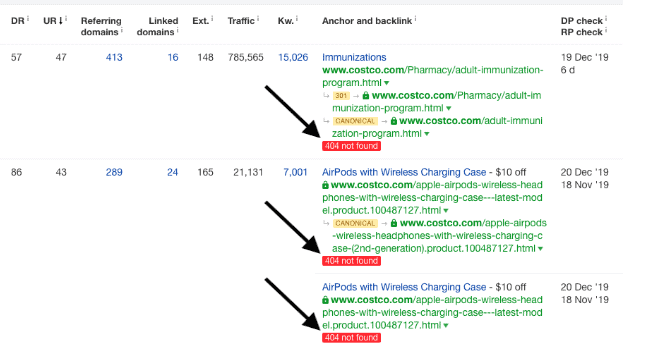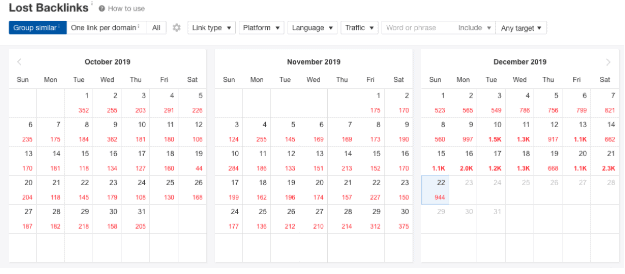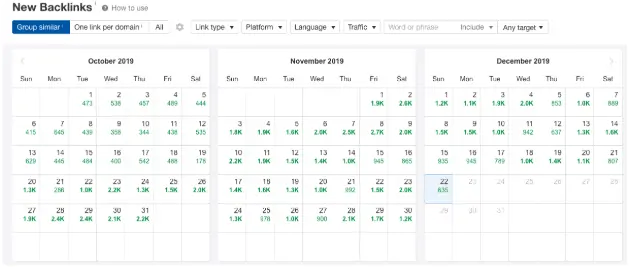Taking advantage of organic press mentions is a no-brainer. But there are advanced techniques brands can integrate to help improve their ROI and secure links to targeted pages. Read on to see how we’ve found success with advanced link move and reclamation practices in a broad range of markets.
Link reclamation is a tried and true strategy of successful brands for a reason–it’s relatively easy, and it delivers. However, because this practice has been going on for so long, the amount of publishers still open to these kinds of link updates are dwindling.
This means that marketers need to get smarter about how and why they reach out to publications to secure links, and implement new strategies to make sure their brand stays on top.
Here at Siege we have helped brands in a variety of markets take advantage of the press they are already receiving, to help boost their organic rankings and traffic. We’ve discussed some common forms of link reclamation and link building on our blog before: brand name misspellings, reverse image searches and more recently, short form text.
But outside of the tried-and-true methods, there are additional strategies your brand can implement to boost traffic for specific campaigns or secure more links to coveted money pages.
Here, we will be taking a look at the approaches we’ve seen success with for our clients as well as how you can bring these ideas into your current plan of action.
Link Reclamation: A Brief Summary
Unlinked mentions, while still contributing to your company’s overall brand awareness, aren’t doing anything to help boost your rankings, traffic and conversions. Links can get lost for a variety of reasons, or your brand can be mentioned without a link to start with.
Reaching out and requesting proper credit for your brand is known as link reclamation, and it can be beneficial for brands of all sizes as the ROI is strong. A typical link reclamation outreach email looks something like this:
The above template accomplishes a few things:
- Short sentences allow the journalist to quickly scan the email.
- The link to their own piece makes it easy for them to know which article you are requesting an update for.
- The tie to the readers provides the why, proving the benefit of updating the link.
While this strategy is certainly effective, most circumstances will warrant a homepage link. We all know the benefit of those homepage links, but there is an opportunity to get granular in certain situations by targeting bottom-funnel pages.
When done correctly, this advanced practice can help take your company to the next level as well as bring in more value. One of these advanced practices is known as link moves.
Link Moves
Link moves are a purposeful outreach tactic to move already acquired links to more valuable pages. Many people don’t consider that while a link is good, a more optimally placed link is even better, and there often many opportunities to move links to better places.
One thing that’s crucial to understand about link moves is the why. Put yourself in the journalists shoes–would you take time out of your day to update a published article if it had no benefit to your readers? Not likely. Your email needs to succinctly explain why they should care. If you can’t figure out the why on your own, then you aren’t in a good position to reach out.
There are several questions to ask yourself when beginning this type of outreach, including when to ask for a link and what page to target to get the maximum benefit.
When Should I Ask For A Link Move?
In terms of pitching etiquette, similar rules apply for link moves as link reclamation. As a general rule of thumb, you shouldn’t be reaching out to reporters whose article is more than a few months old. There are exceptions to this rule (evergreen content, for one) but for the most part journalists don’t want to update an article that no one is reading anymore.
Your request also needs to make sense within the context of the article. Not only does this help increase the likelihood you’ll get a positive response, but it also helps prevent your email from seeming like spam.
For instance, if an article about your brand’s new partnership with a restaurant has a link to your homepage, it would make sense to get that link updated to one of your money pages for that merchant. But asking for a merchant page link when that merchant isn’t mentioned in the article at all? Red flag.
Here is an example of how to reach out for a spam-free link move request:
By including all the information they will need in a succinct way, you improve your chances of getting that update. The customization is really important here as well, and the last paragraph allows for some flexibility in why you think this will help the readers. Plus, it shows that you actually took the time to read the article.
What Pages Should I Target?
When deciding what pages to target in your link move efforts, it’s best to work within every section of the buyer’s funnel. No matter if a reader is in the inquisitive stage of their purchase journey or are about to buy, getting your brand name (and link) in their mind through various article placements will help increase conversion rates in a more natural way.
Another benefit to targeting a variety of pages is it allows for more opportunities for success. Instead of focusing only on gaining links to pages that convert highly, include informative pages in your campaign as well. Informative links are more likely to get coverage as they are highly valuable to readers.
One thing to note here is blog post pages. Generally, these are not as valued as homepage links. So if an article links to your homepage when discussing your recent content, it’s a good idea to leave the link as is for maximum SEO value.
Link Move Examples
One vertical that can greatly benefit from a link move campaign is coupon sites.
These sites tend to have specific pages for every merchant and deal they advertise, meaning that there is plenty of opportunity to gain backlinks to money pages (without feeling forced) to help bring in revenue. The below screenshot, taken from an article about how to save at the Dollar Store, links to the homepages of three different sites within the coupon space.
All three of these sites could reach out to the reporter to ask for a link move to a more targeted page. And since the article itself is about saving money, asking for a link to a Dollar Store coupon page benefits both the brand and the reader, meaning your outreach email is less likely to come across as spammy.
However, coupon sites aren’t the only pages that can benefit from link moves. While almost all verticals can take advantage of this strategy, the ROI of this type of campaign greatly increases with the amount of links coming in as there are more opportunities for outreach.
VRBO (formerly HomeAway), is a great example of a bigger name in the vacation rental space, averaging 200+ new backlinks a day. Through some Ahrefs research, it’s clear that there are several opportunities for them to update press coverage to a page that will better serve their SEO goals. This article on places to stay in Toronto from TripSavy, for example, mentions HomeAway and links to the homepage.
In this instance, the reporter can be reached out to for an update on the brand name and the link, providing even more incentive than if they were just asking for a link change. VRBO has several Canada and Toronto specific pages that would mix in seamlessly here, allowing for another instance of simultaneous brand and reader benefit.
Link Move Goals
The goal of your link move campaign should be a mix of converting, informative and homepage links to help diversify your backlink portfolio and boost your domain authority over time. And by making sure you only ask for links where it makes sense to the journalist and their readers, you can create positive relationships that will help your campaign stay viable over time.
Advanced Link Reclamation Strategies
Well-known ways to acquire links such as Moz fresh web explorer, Google searches and alerts should not be ignored. But, there are more unconventional ways to receive the same result. The advanced tips below are great for those who have already exhausted traditional avenues or who are just looking to take link reclamation to the next level.
Take Advantage of Competitors Missteps
You are already watching your competitors closely. Monitoring their content and campaigns, trying to create something bigger and better. So why not take advantage of their mistakes and turn them into wins for your brand?
Companies, especially ones with a large index of pages, don’t often have time to comb through every page that has an error to update or redirect it. This means that there are a variety of sources out there linking to your competitors broken pages, most likely covering topics extremely relevant to your business that you can capitalize on.
To make the most out of this situation, first you need to find your competitors’ broken pages. One way to do this is by checking their broken backlink profile via Ahrefs.
From there, you can scroll through the list to find “404 not found” internal links that your brand has a matching page for. Depending on the size of your competitor, there may be a large number of broken or mis-redirected pages you can work with.
Once you have a good number of pages in the que from your competitors, the next step is broken link outreach to let journalists know about the error on their page. By offering up your brands similar page, you make it easier on the journalist when updating while securing a valuable link for your company as well.
Find and Fix Lost Links
Websites lose links for a wide range of reasons everyday. From updated content to shuttered websites, it’s common for bigger brands to lose hundreds of links a day.
But some of those links can be regained. The first step is to figure out why they were removed in the first place and then respond in a positive and quick manner.
Using the “Lost Backlinks” search in Ahrefs, you can find the links your brand lost each day. By comparing the updated content to previous versions in the Wayback Machine, you can begin to determine the reason for the lost link. Some of the reasons could include:
1. The content was updated. If they updated their content and removed your link, there might be a good reason why. Maybe they felt your link wasn’t relevant to their piece anymore, or it didn’t add enough value.
If you have a page you feel would be a better fit, you can reach out to suggest the inclusion. But make sure they didn’t remove all external links first, and don’t force a page that doesn’t fit!
2. They stopped linking out. As publishers get smarter about SEO, many are implementing new policies that include removing external links (or making them “no-follow”).
If they removed a bunch of external links throughout a few pieces of content it’s best to leave it be. Most likely, you won’t be able to get the link added back and you’ll bug a reporter you might want to reach out to later.
3. A better resource won. If they updated the same anchor text to another site with similar content, it’s possible they were pitched an alternative source and saw it as a better resource.
While it’s not in best practice to ask for them to reverse the link, it is a good opportunity to learn what journalists are looking for within this niche. That way, you can make your next piece of content even better.
Research Current Links for Potential Moves
Within your own backlink portfolio, there are a wide range of opportunities available for link moves. Using Ahrefs’ “New Backlinks” explorer, you can find homepage or blog page links that could potentially get moved to other, more targeted pages.
Ahrefs will break down how many incoming links you acquire a day. They also allow you to search and find potential prospects in real time.
Before reaching out for a link move, it’s important to properly vet the article to make sure your suggestion is a good fit. Take the below screenshot from an MSN article about last-minute holiday gifts as an example:
In the article, they link to Costco’s FAQ page for a free delivery deal. While somewhat relevant, the page could be updated to a more direct internal page for the deal.
This will help ensure Costco gets the maximum SEO benefits while still being beneficial to the readers. With continuous monitoring of incoming backlinks, you can help pivot incoming links to bottom-funnel pages that will improve your brands ranking and traffic in the long term.
Link reclamation is a multi-faceted approach to building links, traffic and boosting your site’s overall DA. The above tips have worked well for us here at Siege, helping to improve client rankings and get closer to their overall SEO goals. If you have an advanced link reclamation or link move tip you’ve found success with, please let us know down below!


